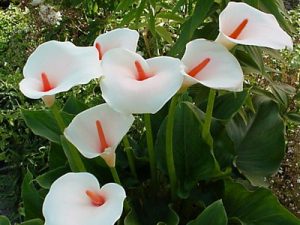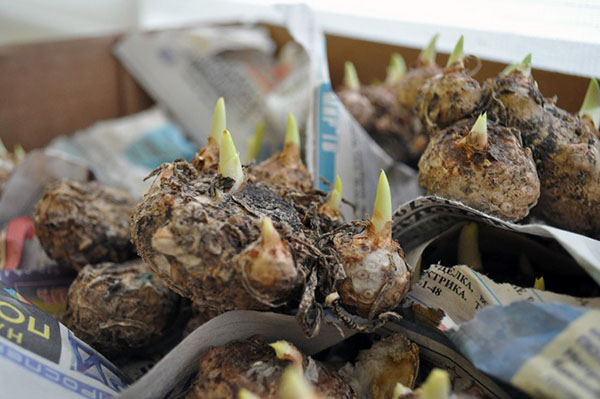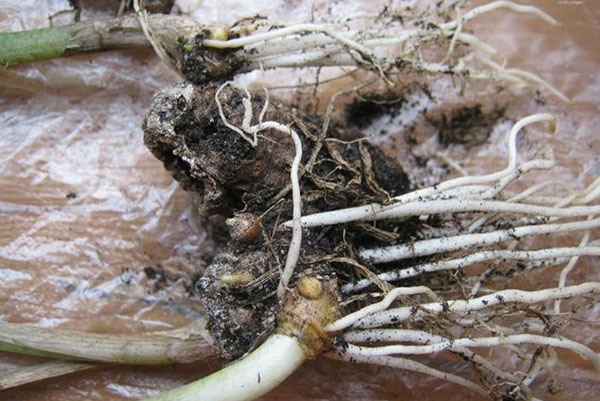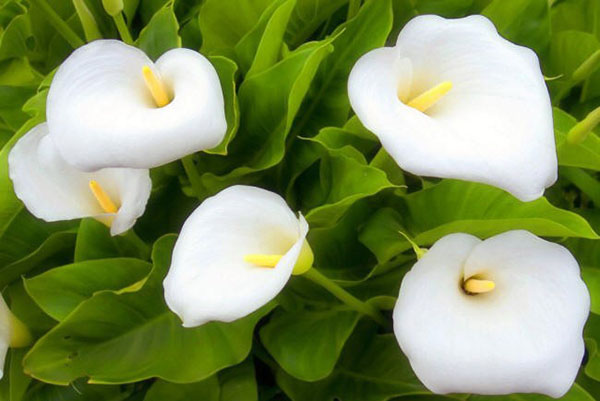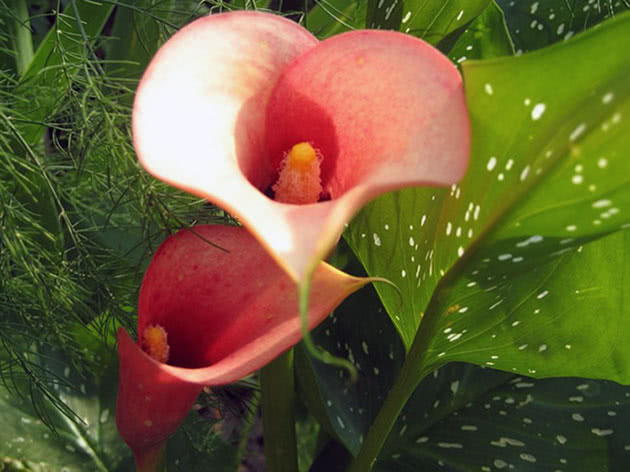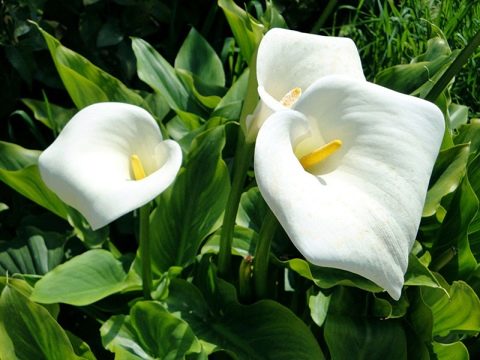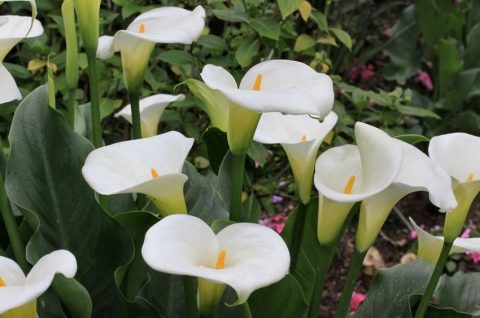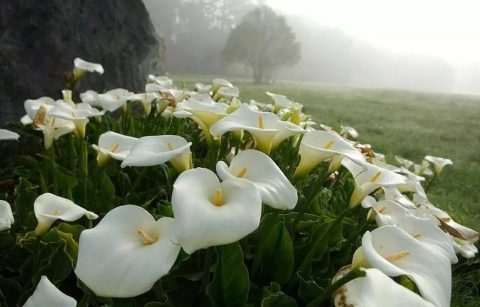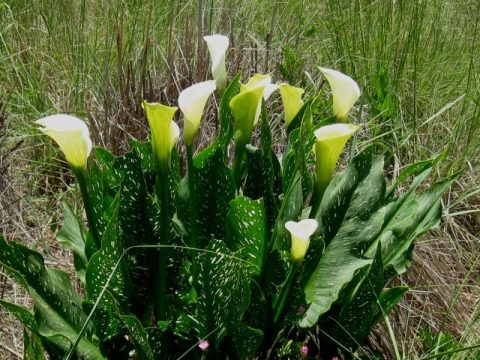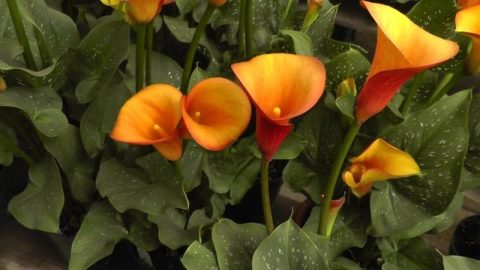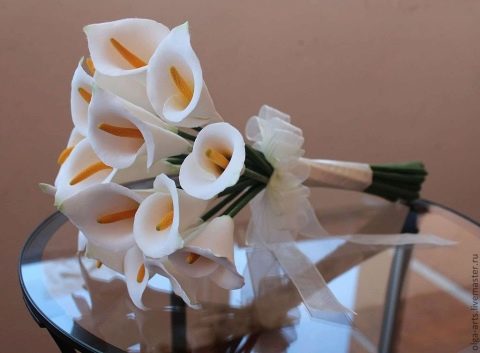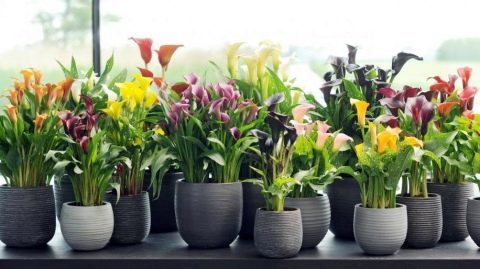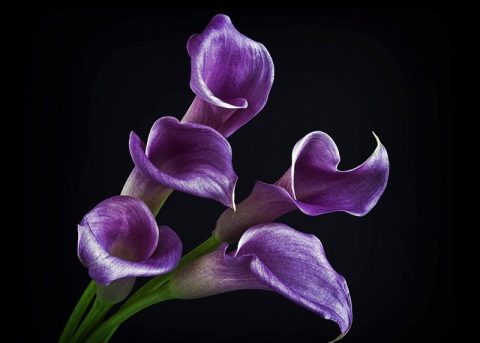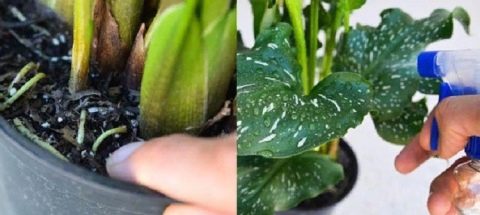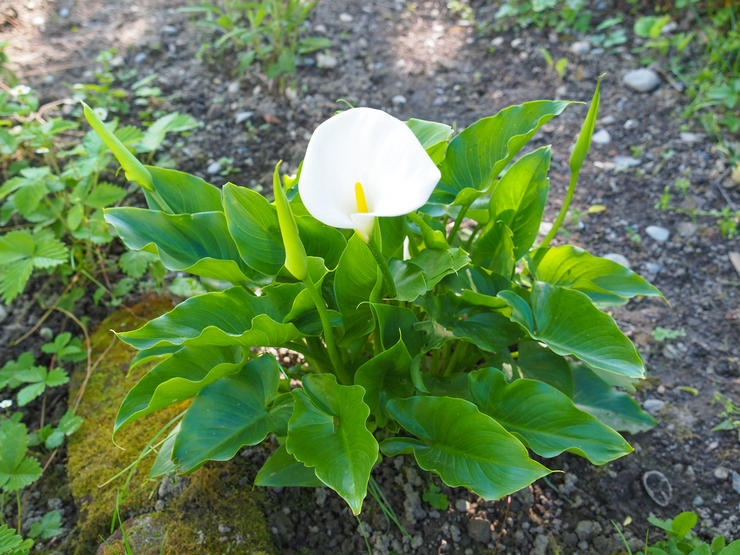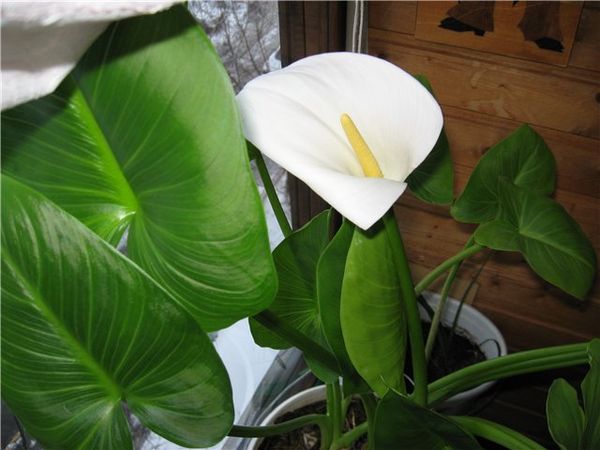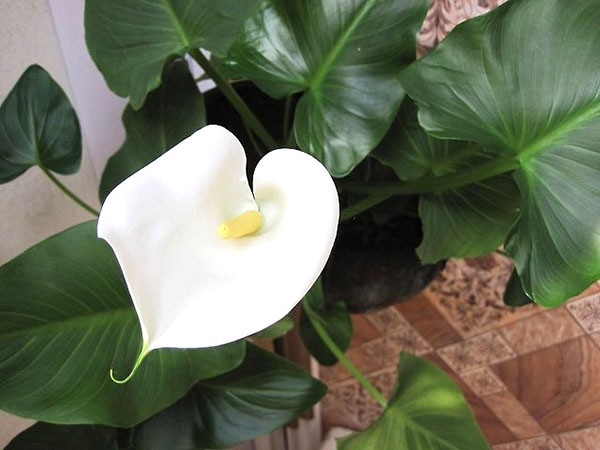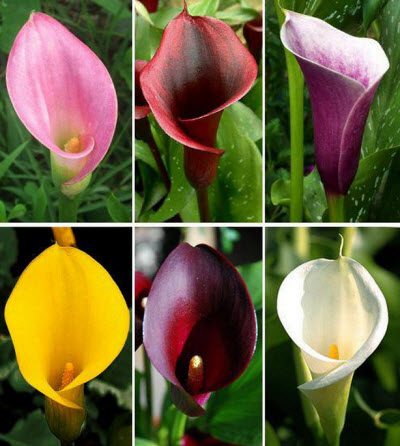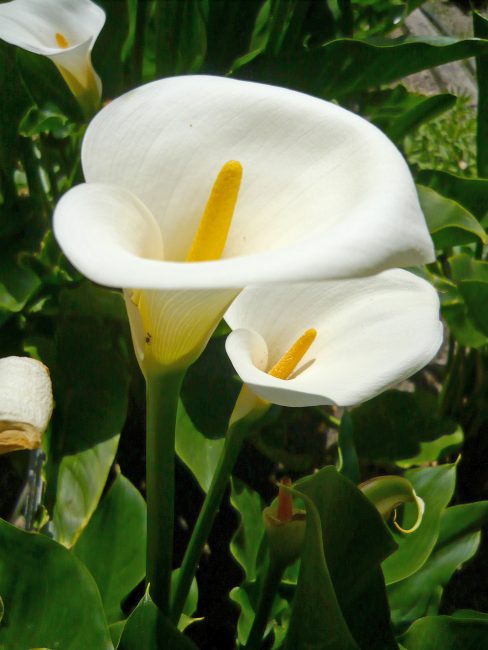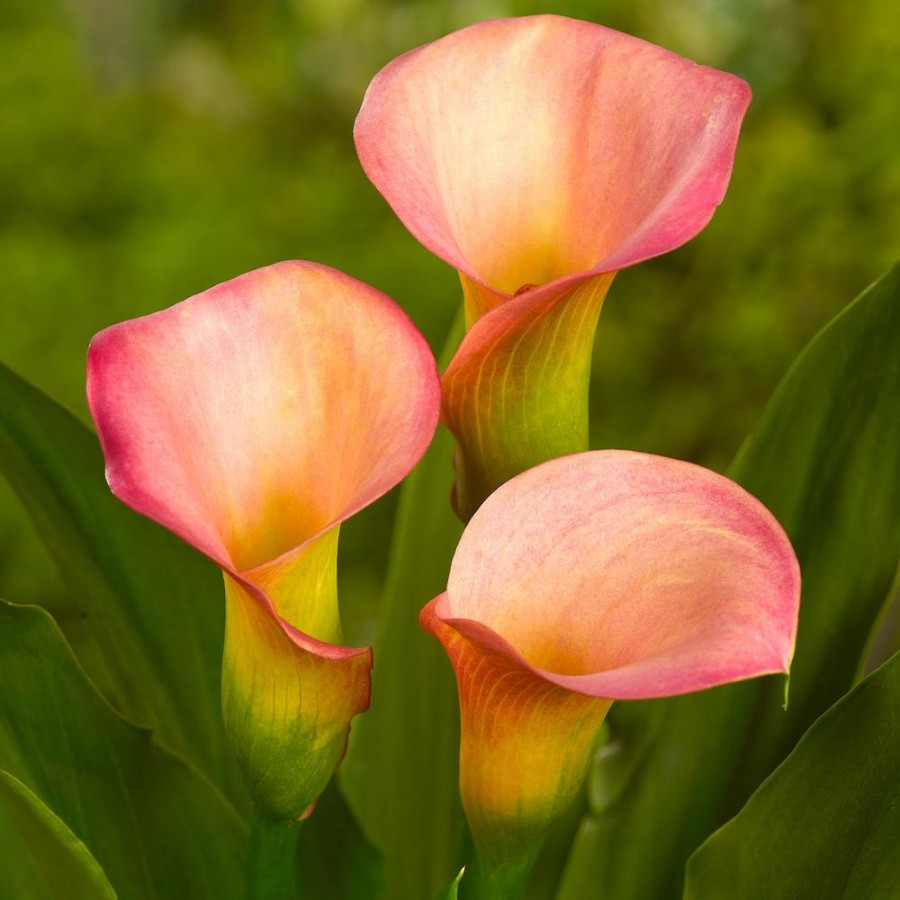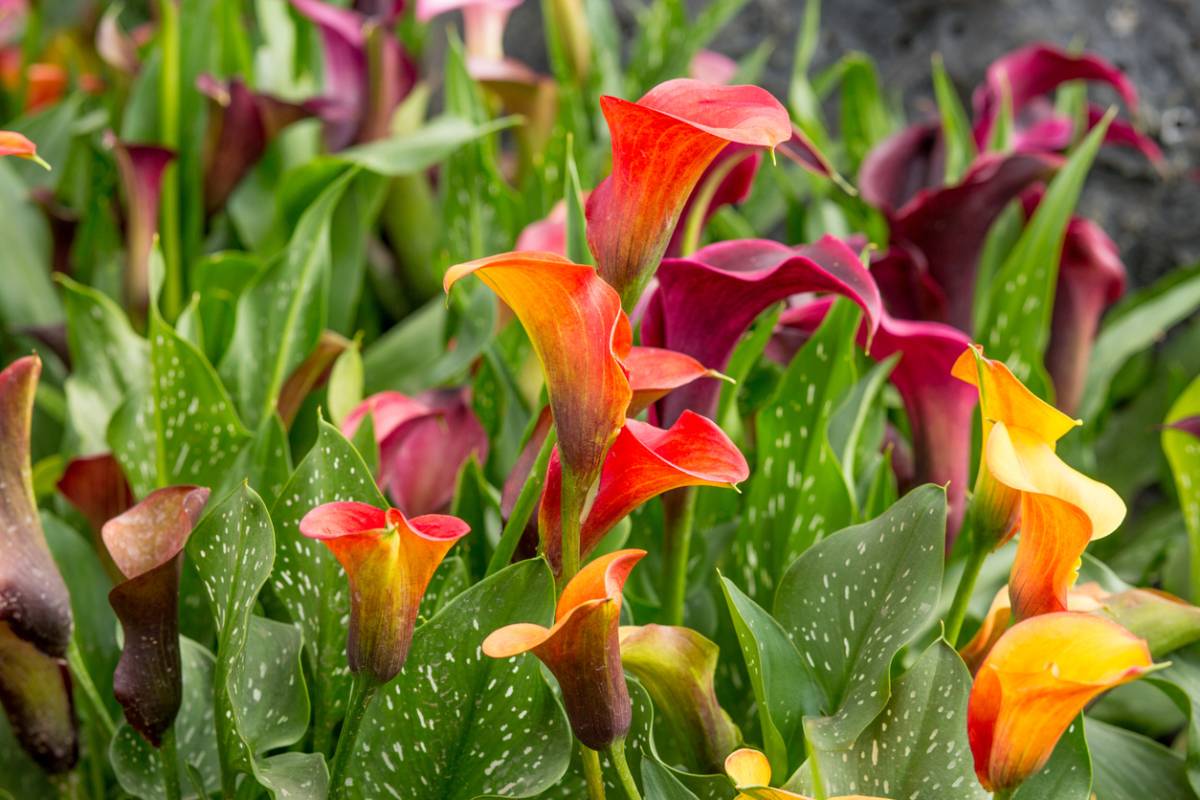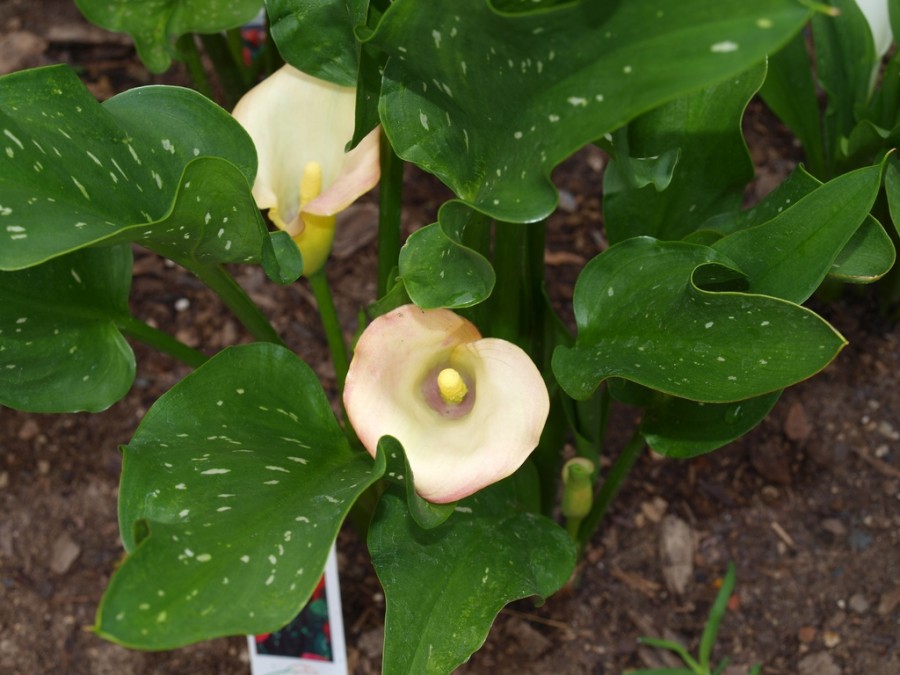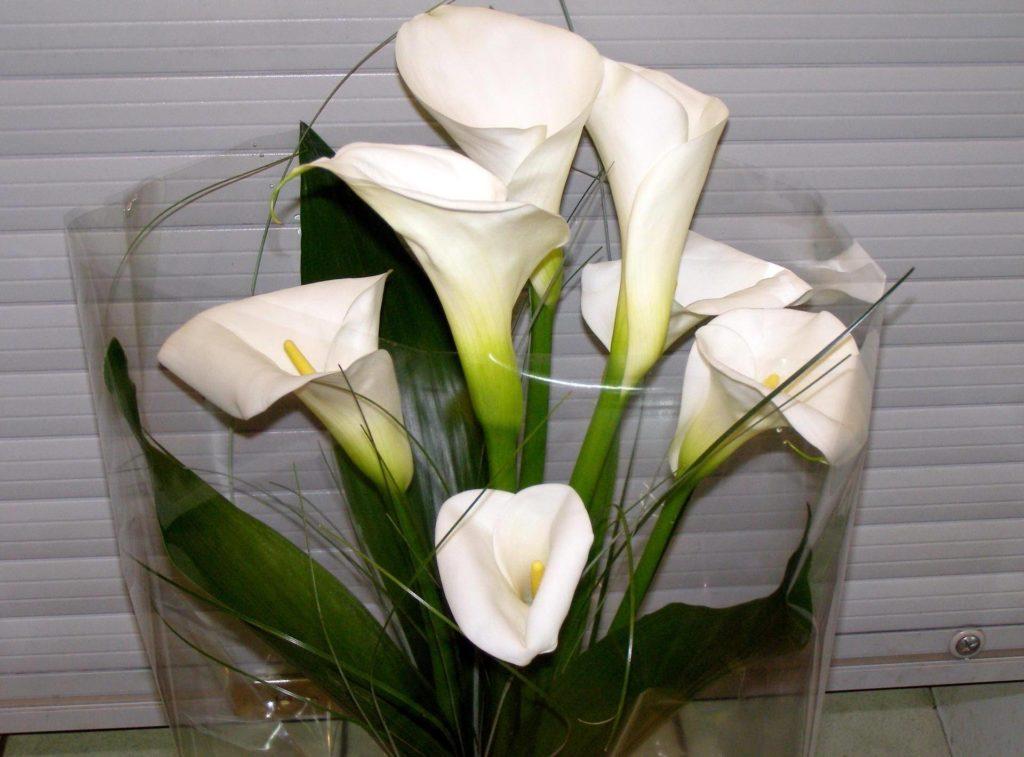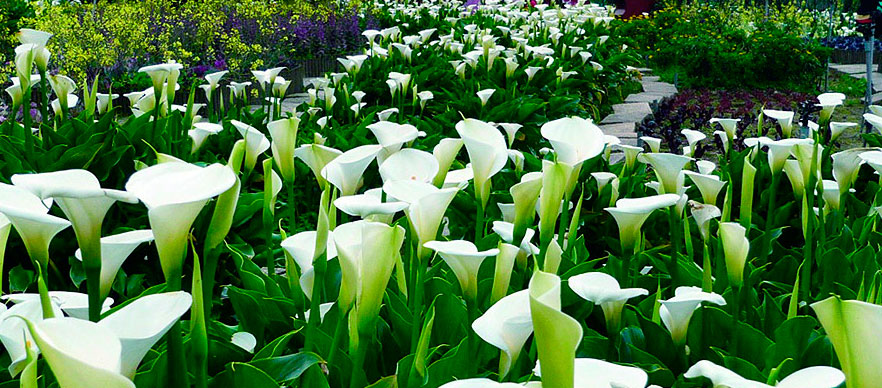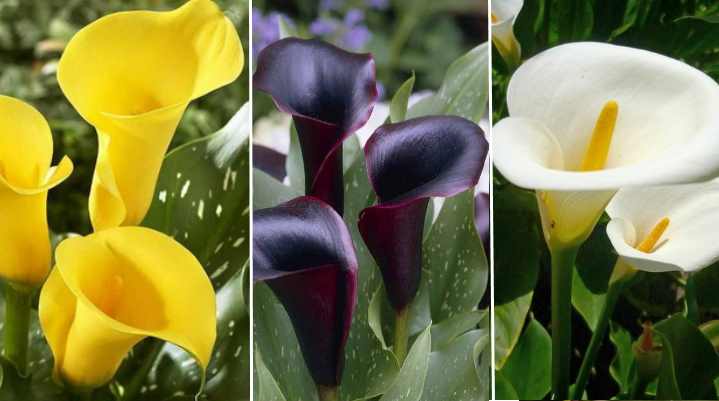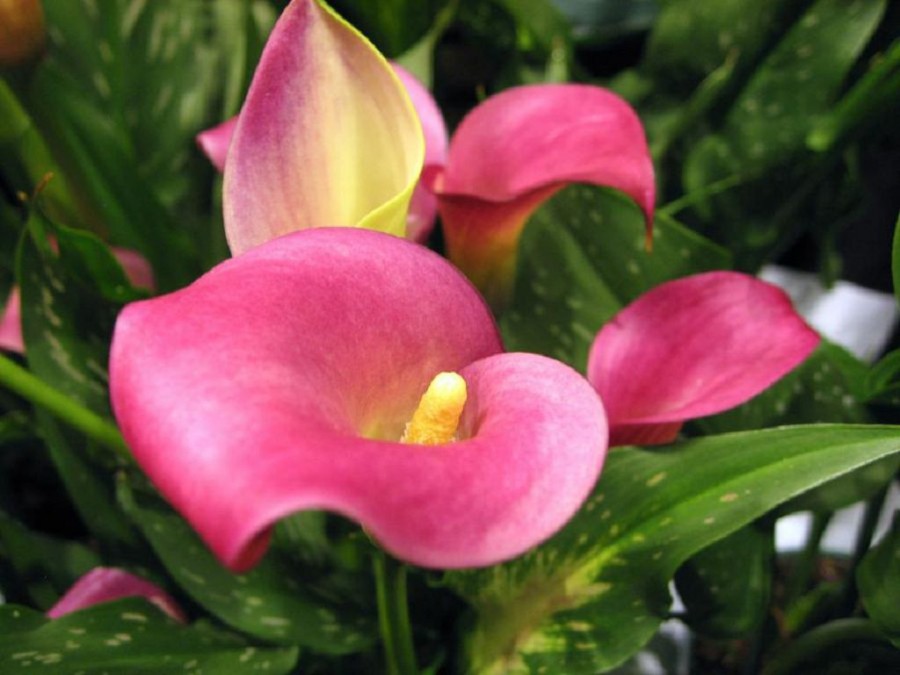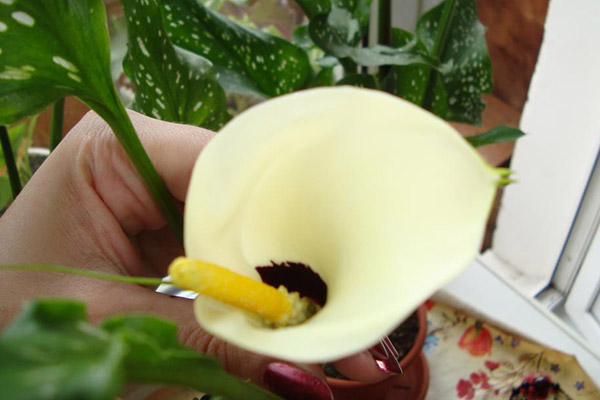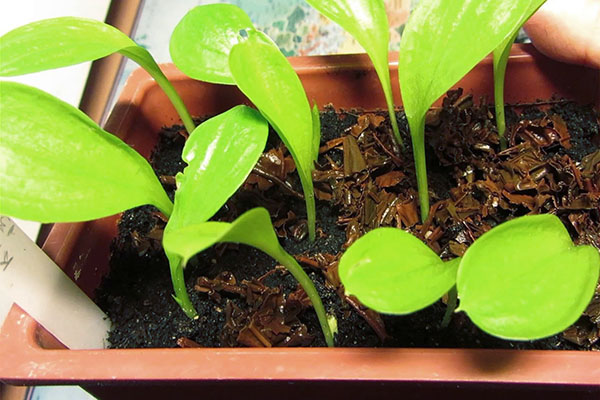What diseases and pests await Ethiopian calla lilies at home
All problems that may lie in wait for the plant appear due to improper care. The first thing that can lead to problems is active watering during rest. Also, diseases can be caused by:
- Cold.
- A sharp drop in temperature.
- Drafts.
If you still could not wait for the long-awaited flowering, the reason may be:
- Not enough light.
- The landing was in a very cramped pot.
- The flower had no time to rest.
- Unsuitable fertilizers were used.
Ethiopian calla is extremely rare with various pests at home. The maximum that can strike her is the spider mite. And this problem appears due to improper care. As soon as you notice such a problem, send the flower under a warm shower.
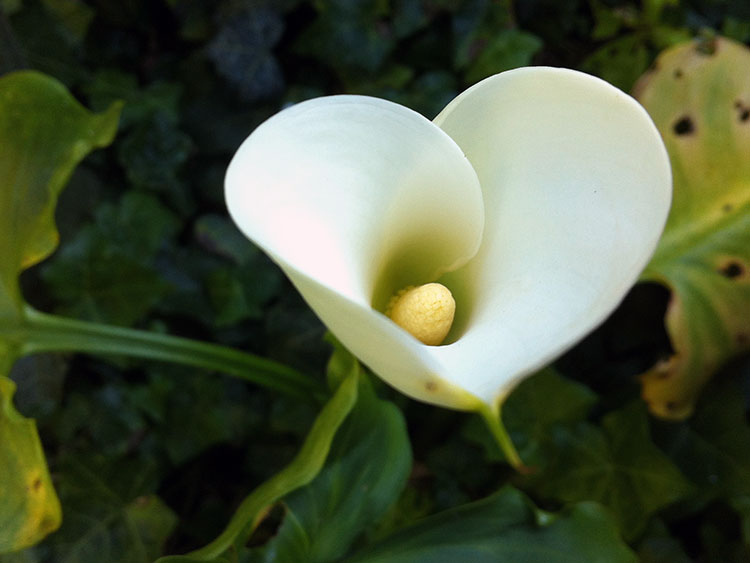
With proper care, pests and diseases do not threaten the plant. Calla will delight you with its flowering for a whole month.
Wintering conditions
Calla Ethiopian is a plant with pronounced growth cycles. Usually, it begins to bloom under favorable conditions already on the eve of Christmas. Flowers then last until summer.
Then a dormant period begins, which is indicated by the yellow leaves. Watering is now limited and then paused completely. The plant pot can now be moved to a protected location on the balcony or garden. The earth can even dry out completely. There is usually enough natural rainfall to keep the tuber in the substrate from drying out completely. On the balcony, you need to lightly water the plant from time to time.
After a dormant period, after about 4-6 weeks, the knobby tuber is removed from the pot, the earth is shaken off and planted in fresh soil. A heavy mixture is suitable for planting. If using ordinary flower soil, you can mix in a small amount of compost or clay. Mixed soil is also suitable. At first, the tuber is kept moderately moist. However, as soon as shoots begin to appear, the plant is watered more abundantly and fertilized from time to time. The plant needs a relatively large amount of nutrients.
If calla lilies are still in the open air in the fall, before the start of frost, they are rearranged into the room and kept at a temperature of 9 degrees. Later, the temperature can be increased to 14 degrees
It is very important at this time that the plant is in a bright place. Calla tolerates small portions of the sun well
Under favorable conditions, calla lilies begin to bloom again by the end of winter or in spring.
Description of the features of the care and cultivation of Ethiopian calla lilies
One of the most beautiful and wonderful flowers is Calla lily. Due to its sophistication, it can be found not just at home, but as part of an expensive interior. Some consider calla lily to be a wedding flower, someone is sure that it is a flower of death and saw it at a funeral. But still, the flower looks like a bride's attire and is more considered a wedding one. There are many types of calla lilies, in the article we will talk about a separate type of Ethiopian calla.
How to care for a zantedeschia flower at home
Difficulty growing: medium.
Placement: Zantedeschia is a shade-tolerant plant, grown mainly in the open field, and takes root well in indoor conditions. Indoors, it can be placed both in a bright place and in a shaded one. It is best to place this plant on a north or east facing window.
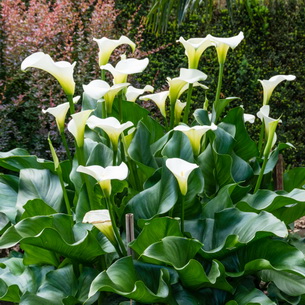
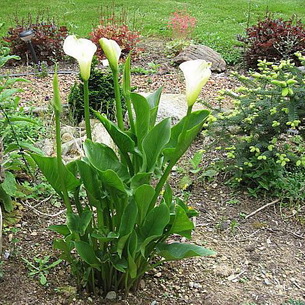
In summer, Zantedeskians feel good in the garden, in the sliding shade of the trees. When planted in open ground, they grow powerful tubers, give many children.
Lighting requirements: bright, diffused light with some direct sunlight (morning or evening).
Temperature requirements: optimal 22-23 ° C.The tubers need a cool wintering temperature of about 12 ° C and can be stored in sawdust or slightly damp peat on the bottom shelf of the refrigerator. Before the new planting, the tubers need to be regularly removed and inspected, the decayed parts should be cleaned, dried and processed with brilliant green.
Watering, spraying: from spring to autumn, when caring for Zantedesky calla lilies, watering should be abundant, moderate in winter. For watering, it is advisable to use soft water at room temperature or warm. They react positively to spraying and high humidity. You can keep the pot in a wide pan of water.
Top dressing: from February to June, during the care of the zantedeskia at home, every 10-14 days, you need to feed the plant with a special fertilizer for flowering indoor plants. A high proportion of phosphorus in fertilizer is the key to a successful flowering. Nitrogen fertilizers (for decorative deciduous plants) will only stimulate the growth of leaves.
Transfer: annually after a dormant period, the tubers are planted in a fresh substrate, if possible without dividing. The larger the tuber, the more flowers it produces. Planting depth - 5 cm. Immediately after planting, zantedeschia form a root system and only then begin to build up green mass.
Substrate: 2 parts of sod land, 1 part of compost or humus, 1 part of leafy soil, 1 part of peat and 1 part of sand.
Reproduction. Zantedeschia reproduces well by seed or offspring. The offspring grow after flowering.
The offspring formed on the plant must be removed regularly, otherwise the flowering process will be disrupted.
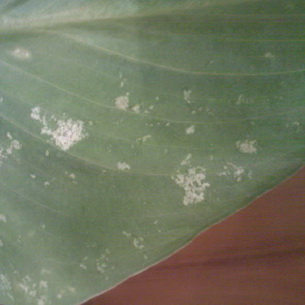

Pests and diseases. With improper care, whiteflies settle on Zantedeschia. When watering, place the pot with the plant in a container of warm water for 2-3 hours.
Possible problems: does not bloom without a dormant period
When buying tubers, pay attention to their size and condition - the tuber should be round, firm to the touch, but not dry, without mechanical damage (intertubular cuts are allowed)
Note: calla lilies live for 3 - 5 years, flowering gradually weakens and the flower needs to be replaced. After flowering, cut off the stalks and enjoy the already deciduous plant for another 2 to 3 months.
These photos show how to take care of the Zantedesk:
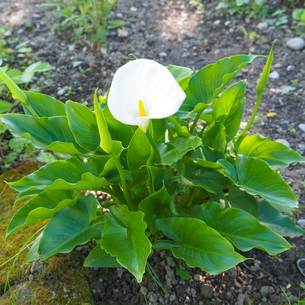

Planting and care at home
Planting calla lilies, as well as leaving, is a painstaking business, but very interesting. In order for calla lilies to develop optimally at home and give large inflorescences, you need to well equip the place where breeding will be carried out, and provide the plant with high-quality care. There should be plenty of room for the roots, so choose a pot that is at least half a meter in diameter with a diameter of 40 centimeters or more.
Test drainage - although this plant is found in swamps in its homeland, stagnation of liquid is harmful to it. Cover the bottom with expanded clay or pebbles for drainage. You can buy specially designated soil for calla lilies, or you can prepare a mixture of equal parts of leafy soil, turf and fertilizer with your own hands.
Planting calla lilies in a pot
You can take the bulbs from friends when they plant their flower.
When buying a planting type of material, pay close attention to its appearance
A first-class bulb has specific characteristics:
- large, even, tough;
- have a peel of a uniform color without wounds and spoiled areas;
- have a healthy kidney.
Calla planted in March takes root well at home. On the eve of planting, soak the tubers in a clear solution of potassium permanganate, and then examine each specimen. Remove all unhealthy places, growths and other defects, and disinfect the wounds with an antiseptic solution. It is a good idea to keep the bulbs in the growth catalyst solution, then planting and breeding will give the best results.
Indoor calla lilies produce large leaves, an oblong stem, and a heavy inflorescence. In order for the rhizome to hold firmly to the ground, when planting at home, bury it to a depth six to twelve centimeters... Until a sprout emerges from the ground, keep the pot under a membrane to keep it moist and warm inside. At this time, maintenance is not necessary, just open the container every day for ventilation and make sure that the earth does not dry out.
After the emergence of the shoot, the pot must be installed in a place with a temperature of +15 to +18, where the best lighting is in the afternoon. The south-western window of the house is perfect, only the cracks need to be repaired in advance, so that the plant does not suffer from drafts.
If you bought a rare variety of bulbs, read the annotation carefully. They may need landing at shallower depths or special care.
Caring for room calla lilies
If comfortable conditions are built for the calla lilies, there are no problems with future care. All actions are reduced to watering, feeding and ensuring a rest regime. Of course, there are certain differences in caring for rhizome and tuberous calla lilies.
Indoor calla lilies, fertilization and irrigation regime:
Ethiopian calla lilies are watered as the topsoil dries. Watering is made rich in order to moisten the entire earth to the roots, and then, after fifteen to twenty minutes, the excess water is drained from the pan.
Watering "colored" calla lilies is performed when the soil dries out four centimeters deep. Water the plants along the edge of the flowerpot.
At the end of flowering, watering is reduced, and for tuberous calla lilies, a month after flowering, watering is completely stopped.
In the hot season, callam lilies, in addition to watering, are sprinkled twice a day.
Calla lilies very quickly build up a root system, which constantly depletes the earth. Therefore, you need to more often fertilize room calla lilies. This point is especially important if the plant is deficient in sunlight and heat.
You can use any complex fertilizer for flowering crops. It should be entered every ten to fifteen days. An exception is nitrogen fertilization - it should not be applied before flowering. Excess nitrogen during the growing season is a common reason why indoor calla does not bloom.
To ensure that the callas are not deficient in nutrients, you can feed them with urea.
However, care should be taken not to oversaturate the plants. You can understand that there is too much fertilizer by drying out and yellowing leaves.
Caring for calla lilies after cutting
To keep cut plants fresh and healthy, you must keep them out of sunlight and place them in a cool place. The water in the vase should not be overly cool, not even slightly warm. In addition, if black calla lilies are kept without water for more than 20 minutes, their stems will close and no longer accept any further hydration. To prevent this from happening, cut off the stems with a sharp knife under running water.
Black calla lilies in the big photo after cutting.
Black calla lilies are gorgeous flowers. They are rare but beautiful, dark but elegant
They are ideal for high-profile announcements as they will instantly grab all the attention. They have a strong energy that combines the meanings of lust and negativity with grace and sophistication.
How to care for white room calla lilies
With proper care, white indoor calla does not bloom for only 2-3 months a year. The plant is resting. In her homeland, peace falls on the hot and dry months (in South Africa - December, January, February). In our area, these are the summer months. At this time, growth stops, the leaves of the plant turn yellow. Watering is gradually reduced, the plant is taken out into the garden or on the balcony, where it will be illuminated by the sun's rays, but raindrops will not fall.
During the autumn care of indoor calla lilies at home, the plants are abundantly watered and fed mainly with nitrogen fertilizers. At this time, the flower gives many offspring, which must be removed.
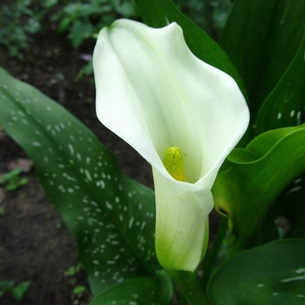
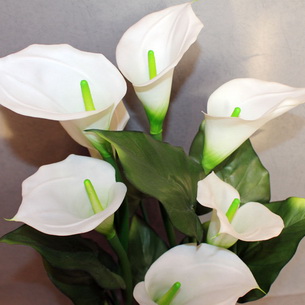
When buds appear, feeding is carried out mainly with phosphorus and potash fertilizers.
During flowering, the plant is watered abundantly and continues to be fed once a week with phosphorus-potassium fertilizers.
The end of the active period of plant growth is evidenced by yellowing and wilting of the leaves. At this time, watering is reduced, the wilted leaves are cut off, and the pot is placed in a dry, well-lit place. There comes a period of rest.
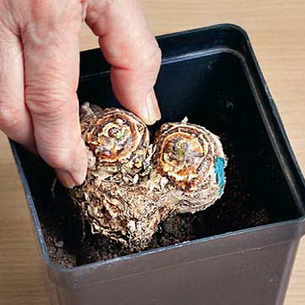

Propagated by offspring and division of the rhizome. The offspring are separated from the mother plant and planted in pots. Watered, sprayed and fed until the buds appear with nitrogenous fertilizers, during flowering - with fertilizers with a high content of phosphorus and potassium.
When dividing the rhizome, a bud should be present on each separated part. The cuts are treated with charcoal and each is planted in its own pot. You do not need to water until sprouts appear. After the sprouts appear, care is no different from caring for an adult plant.
Look at the photo of caring for room white calla lilies:
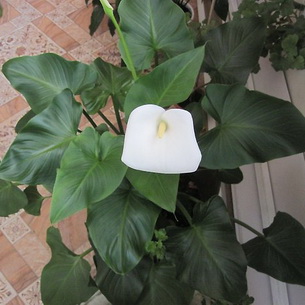

2 Most common types
Calla Ethiopian (Zantedeschia aethiopica) is one of the most common types in indoor floriculture. Flowers with a pure white veil, which is short-tubular and funnel-shaped at the base, and expanding towards the apex, with a sharpness. The flower arrow appears in late winter - early spring. The length of the yellowish inflorescence-cob is almost the same as that of the bedspread. Leaves are dense, fleshy, sagittate-heart-shaped. Their average length is 30-45 cm, and their width is 20-25 cm. The leaves grow on long fleshy petioles. This type of plant can withstand frosts down to -10 degrees. Therefore, in areas with a mild climate, zantedeschia can winter outdoors.
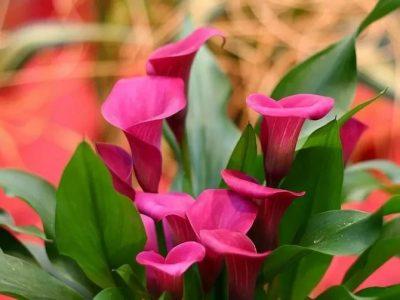
Several dwarf cultivars suitable for growing in small pots have been bred from Ethiopian calla lilies - the Stuttgart pearl, Childsiana and the Little jewel. The Green Goodness variety has light green covers with a moire tint.
The selection of calla lilies is aimed not only at obtaining unusual bedspread colors, but also at increasing the decorativeness of the leaves. The broad-hearted leaves of Zantedeschia elliottiana are covered with silvery spots. The bedspread is yellow-green on the outside and golden-yellow inside, 10-15 cm in length. Blooms in May-June. The total plant height reaches 1 m. The average plant size is 60-90 cm.
White-spotted Zantedeschia (Zantedeschia albomaculata) has bright green leaves with silvery spots, collected in a sagittal bunch. The length of the leaves is up to 45 cm. Funnel-shaped inflorescences appear in summer. The color of the bedspread is white or cream, the throat is red, and the ear is white.
Calla Remann (Zantedeschia rehmanii) has shortened shoots, leaves are narrow, graceful, with silvery spots, growing on long fleshy stalks. The bract is white, green at the base. There are varieties with a pink veil. Corollas are yellow. The plant reaches a height of 30-40 cm.
The bedspreads of Zantedeschia pentlandii are dark golden colored. The leaves are spear-shaped, the total height of the flower is up to 60 cm.
7 diseases and pests
Lack of light leads to the fact that the plants reach up and become loose and weak, and there is no flowering. Calla does not bloom with an insufficient amount of soil in the pot, a sharp change in conditions of existence, insufficient nutrition, and the absence of a dormant period.
From diseases, gray rot, anthracnose, bacterial and root rot can appear. With an excessive amount of nitrogen and a large amount of any nutrients in the soil, calla “grows fat” - it forms a large amount of greenery to the detriment of bud formation. The leaf blades break easily at the slightest touch if the flower lacks nutrition.
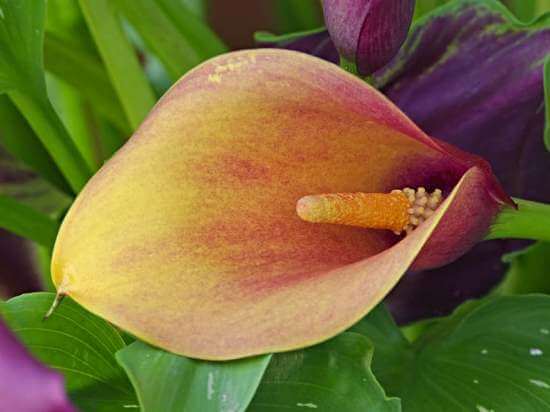
From harmful insects, thrips, aphids, spider mites can attack a flower.
Planting and care at home
Heat-loving calla lilies are fairly easy to grow at home. They are planted in medium-sized pots. Drainage material must be poured at the bottom.The soil mixture is made up of the following components:
- sheet soil (part 1);
- turf soil (2 parts);
- deciduous humus (1 part);
- river sand (0.5 parts).
Even before planting, it is recommended to add superphosphate to the ground.
The calla lily pot is placed on the east or west windowsill. The plant needs bright enough, but diffused light, without direct sunlight. Daylight hours should be at least 10-12 hours. In winter, it is necessary to rearrange the plant to the south window, and also use a phytolamp, otherwise there may be no flowers in the next season, and the shoots will be very stretched.
In spring or summer, the flower will feel better at a temperature of + 23 ... + 25 ° C. From autumn, when the dormant period begins, it is transferred to a cooler room (up to + 12 ... + 15 ° C). This regime must be observed regardless of whether the plant sheds all the leaves. Some owners plant their calla lilies in the garden for the summer, and in the fall they dig them up and transfer them to pots.
An inhabitant of a swamp area needs regular and abundant watering. The soil should be slightly damp, but without stagnant water in the pot and pan. Watering is carried out with well-purified, soft water. It is best to irrigate through the sump using a wick method. Since calla lilies prefer acidic soils, you can add a little lemon juice to the water.
The plant is more comfortable in high humidity, but you should not spray the flowers. Ugly spots appear on the leaves and petals from drops of water. To increase humidity, pallets with wet expanded clay are placed near the plant. The foliage should be regularly wiped off dust with a damp soft cloth.
In order for the plant to develop better, especially with a lack of lighting, regular feeding is needed. Mineral or organic complexes are added every 10-14 days. You can use generic formulations or those designed specifically for calla lilies. Phosphorus compounds are preferred before flowering.
During dormancy, when the tuberous plants completely shed their foliage, the pots are placed in a cool, dark place. Watering is completely stopped. The tubers can be left in the ground or removed, inspected and placed in a container of dry sand. They must be kept at low (+ 5 ... + 10 ° C) temperatures. If the house does not have such a room, the lower shelf of the refrigerator will do.
At the beginning of March, the plants are returned to fresh soil, and they begin to water with caution.
Zantedeschia Calla Lily Care
Ethiopian Zantedeschia, which blooms at the end of winter, requires a lot of light, abundant watering and humid air. When caring for Zantedeschia calla lilies, it is better to use a wide pan, in which there will always be a little water and spray the leaves regularly.
In late spring, when the plant has faded, it is best to transplant the calla into the garden. This species does not shed its leaves during the dormant period. It is only necessary to remove the drying out old leaves and "thin out" some of the new offspring. In August, the calla is returned to the container and home. "Colored calla lilies", blooming in summer, are planted in a nutrient medium in March, after winter storage in a refrigerator (in a fruit box) or basement and placed in a bright, warm place. Before the first leaves, they are watered moderately, and after that they provide the plant with abundant moisture (both roots and leaves). After the plant has faded, watering is reduced in proportion to the remaining leaves. When they are all dry, the tuber should lie a little longer in the soil in order to form a good protective skin; then it is dug up and stored.
Unlike bulbous plants, calla lilies do not like tight containers - the pot must be large enough, with light nutritious soil. It should be fed during the active growing season once every two weeks; at the beginning of the season - with a complex fertilizer with a predominance of nitrogen, during the flowering period - with phosphorus and potassium.
Zantedechia is propagated by transplanting by separating the offspring and dividing the tubers (in calla lilies, it is better to gently break the tubers into parts, each of which contains at least one bud).The rift is sprinkled with crushed coal and dried.
Main types and varieties
There are eight different types of these plants in the genus, but only three are very popular among florists and gardeners. They are used by breeders for their work, while acquiring many other varieties.
Calla Ethiopian
This is a rather tall plant, the flowers of which stand out in a white tone. Peduncles can be longer than one hundred centimeters, while instead of a bulb in such a calla, the underground part is a rhizome. This plant is very fond of moisture and has large glossy leafy plates of grass color, which do not wither even during dormancy.
The most popular types:
- "Nicolai" - the peduncle can be one hundred and fifty centimeters long. The dark green leaves are arrow-shaped and have rather long petioles. The outer surface of the bedspread and the lower part are green, and its diameter ranges from eight to twelve centimeters.
- Pearls are a small-sized plant that reaches a height of fifty centimeters. The best option for growing in a home.
- Schone Zweibruckerin - the peduncle reaches a hundred centimeters in length. Heart-shaped leaf plates have a light tone, the lower part of the bedspread is dark grassy, and the diameter of the part on top ranges from ten to fifteen centimeters.
- The green goddess is insanely beautiful and rather large plants, the height of which can be about ninety centimeters.
Calla Remann
This is a fairly compact plant, the height of which does not exceed seventy centimeters. The bedspread is usually pink in color, but it can be pink-red or burgundy-lilac. Small leaves are colored emerald. Underground are tubers similar to those found in gloxinia or begonia. In autumn, it throws off the foliage, and in winter there is a dormant period.
The most popular types:
- Chameleon is a small-sized plant, the cover of which has a peach color with a wheat tint. Suitable for breeding at home and outdoors.
- Evening is a satin lilac-black plant.
- Indian summer - red with crimson tint.
Calla Elliott
There are quite large emerald leaf plates that have the appearance of a heart, there is a speck on their surface. The seamy plane was covered with yellow, and the obverse was yellow-emerald. The height of the bush is about half a meter.
The most popular types:
- Yellow corner - there is a pale yellow speck on the surface of the rich emerald leaf plates. The bedspread is sunny lemon color.
- Vermeer - the front surface of a slightly wavy bedspread is white marble, the back is crimson-lilac with a deep dark purple hue. There are whitish specks on the surface of the dark emerald leaves.
- Black-eyed beauty - the bedspread has a creamy color with a slight golden tint. There is a speck on the surface of the foliage.
There are also calla lilies that grow exclusively in the wild: white-spotted calla (Calla albomaculata), joyful calla (Calla jucunda), fragrant calla (Calla odorata), (Calla pentlandii), powerful calla (Calla valida).
Some general information
Ethiopian calla (calla aethiopica), or as it is also called Ethiopian zantedeschia (zantedeschia aethiopica), is found in the marshlands of southern Africa. This is the most optimal and comfortable growth environment.
On average, Ethiopian calla grows up to one meter at home. The sheets are quite long, up to 50 centimeters, similar to narrow plates, up to 20 centimeters wide. They grow from the root by gathering in rosettes. There is a flower on a thick root, from which an inflorescence of an ear can be seen. Flowering begins in February and lasts only about a month.
Breeding calla lilies at home is not difficult. a series of rules should be followed, and decent care should be provided. This applies to both garden flowers and indoor flowers.They have their own needs and characteristics:
It should be planted shallowly so that the root system is only slightly covered with soil. Otherwise, putrefactive processes may begin.
What novice flower growers call a flower, in nature is a cover leaf, which is also called a veil, it wraps an ear of an inflorescence. In reality, calla flowers are very tiny, but they emit a wonderful aroma.
The flower after planting will not rise until its rhizome is fully formed. In this case, do not be discouraged if you do not see sprouts for a long time.
Dig up the tubers of the flower very carefully so as not to damage it.
For Ethiopian calla, it is recommended to choose porous pots
Thus, unnecessary moisture will evaporate, leaving it easier.
Calla is a loner flower, she does not like the presence of neighbors nearby.
Periodically, the top layer of soil in the pot should be removed, carefully, without touching the roots. A little nutrient soil is poured on top.


